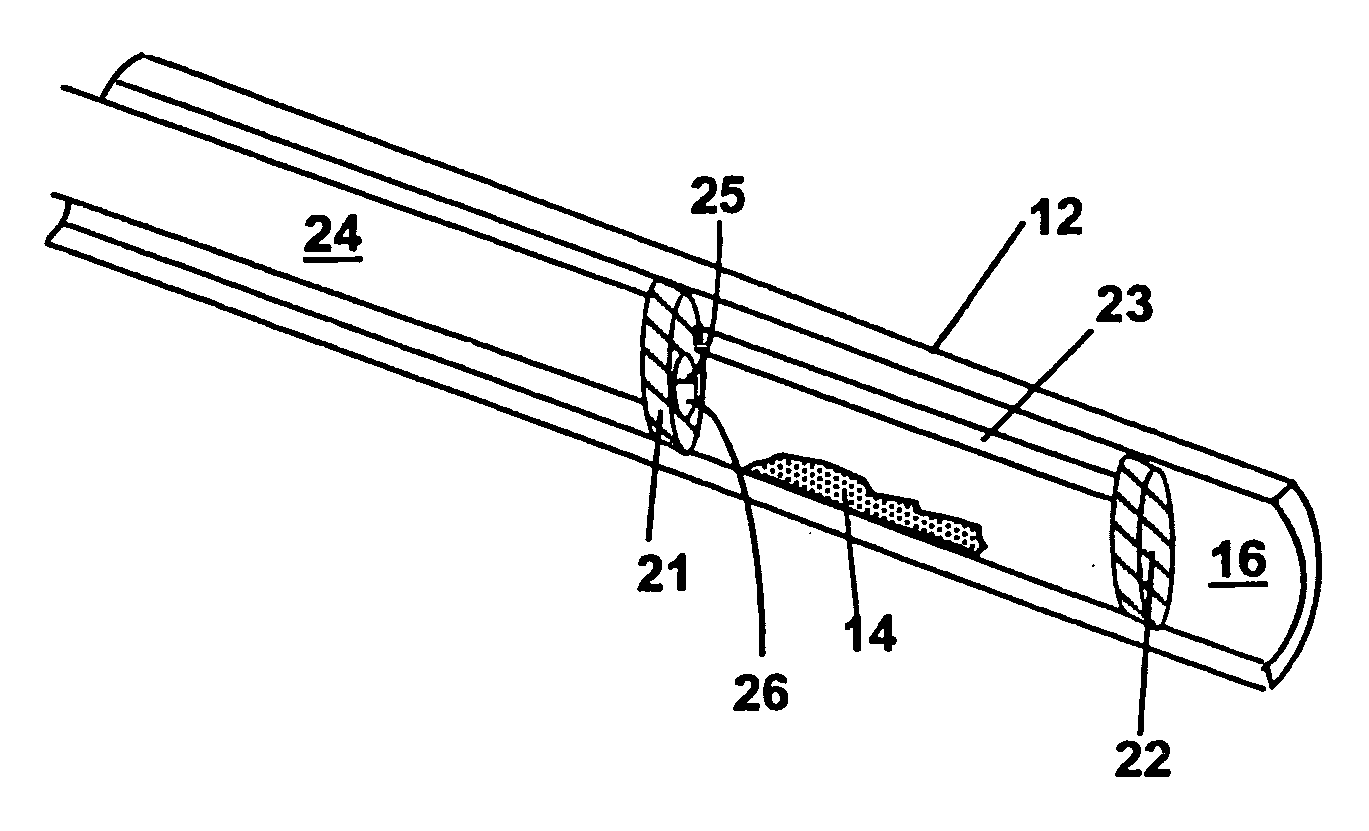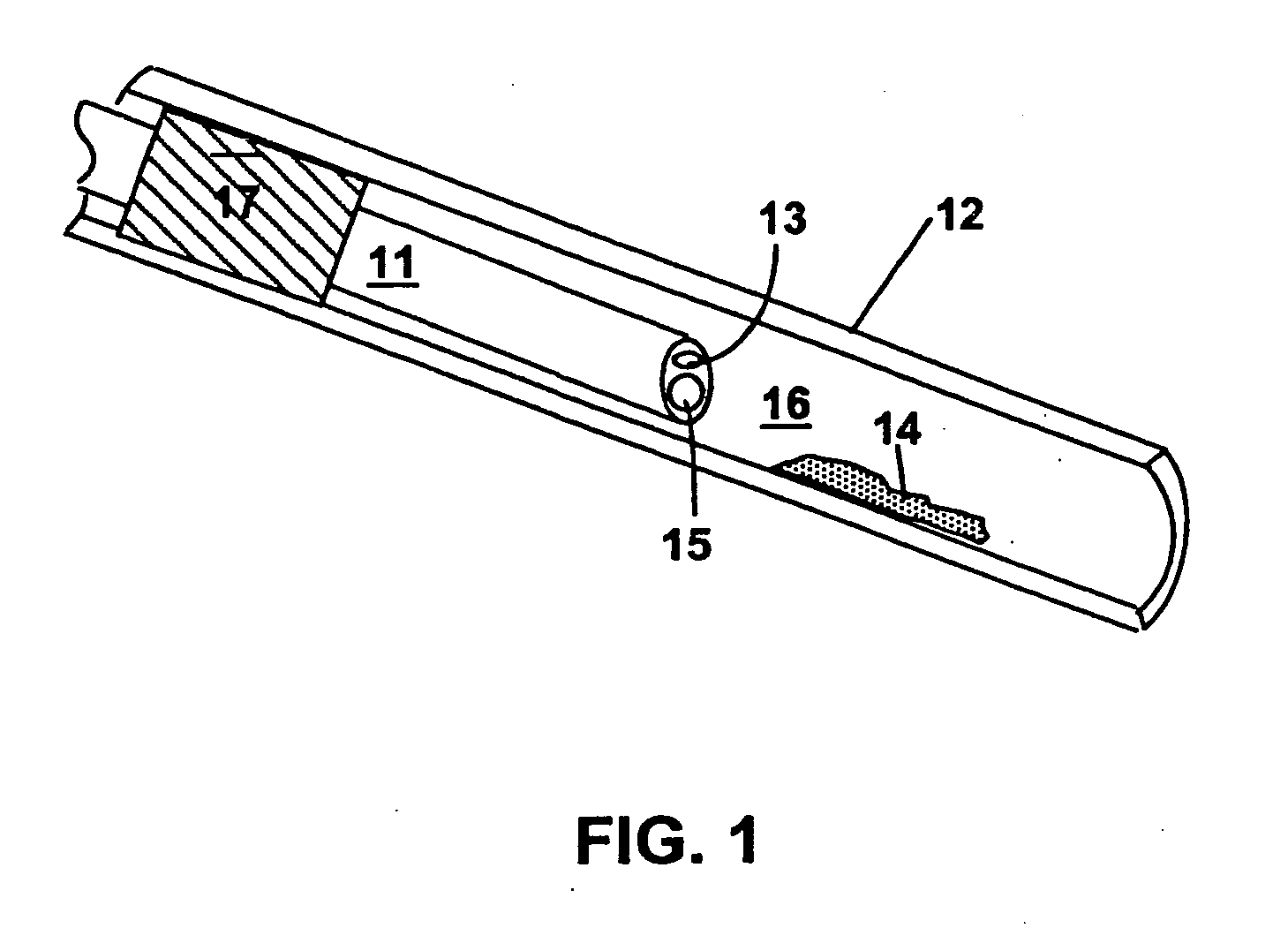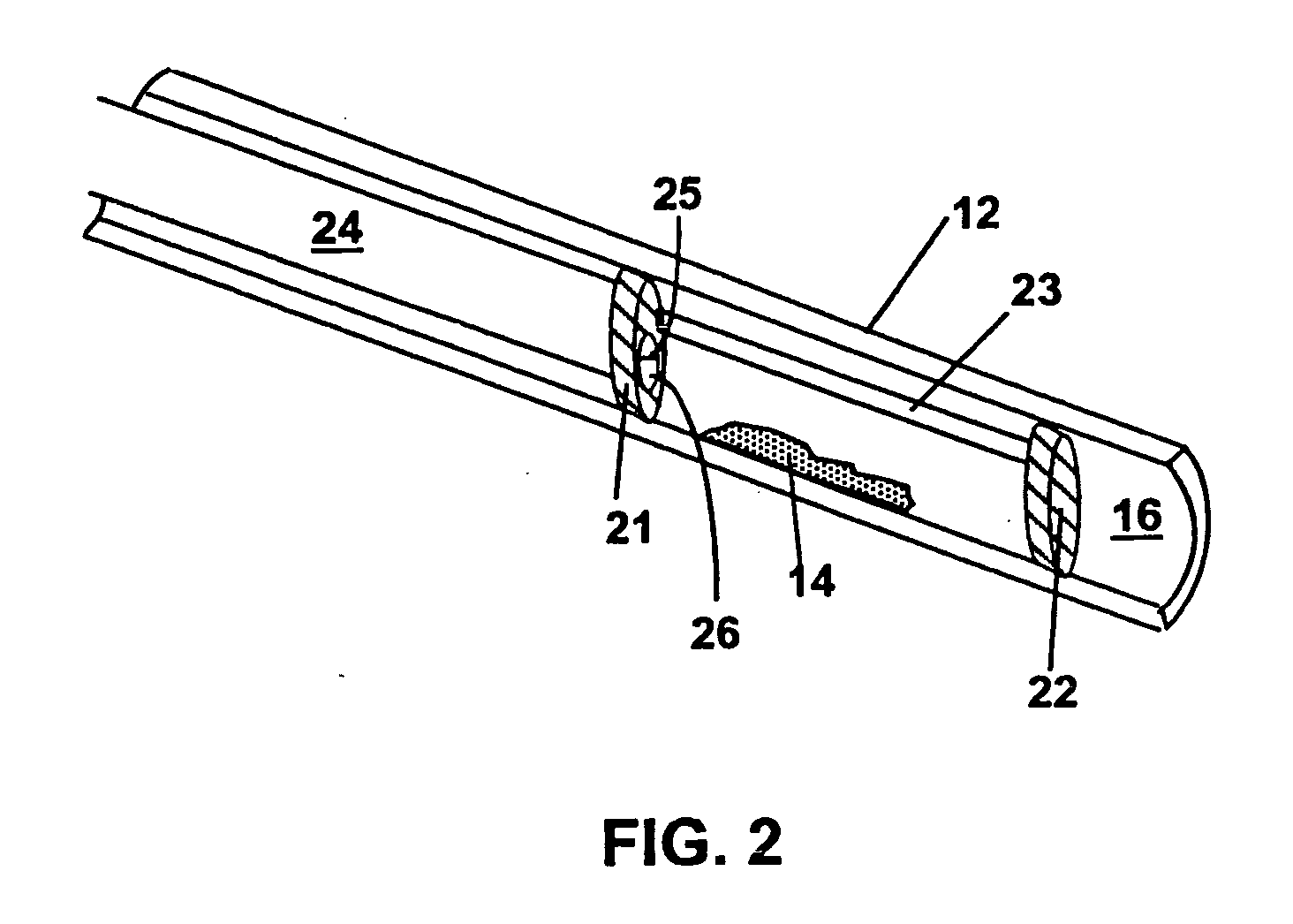Methods and devices for reducing the mineral content of vascular calcified lesions
a technology of calcification lesions and mineral content, applied in the field of vascular disease, can solve the problems of bioprosthesis failure, calcification is an important limitation on the useful life expectancy, and the formation of calcified lesions on prosthetic devices is also a problem
- Summary
- Abstract
- Description
- Claims
- Application Information
AI Technical Summary
Benefits of technology
Problems solved by technology
Method used
Image
Examples
example v
Demineralizing Solution Through the Murine Abdominal Aorta--Vascular Response to Demineralizing Solution
[0143] The following protocol is designed to determine the in vivo cellular response of a vessel to a demineralizing solution developed to treat calcified lesions of the cardiovascular system. This determination of response is accomplished by applying the solution utilized for the decalcification procedure to non-calcified, in vivo rabbit aorta in order to examine the histological response. The demineralizing solution is designed to minimize the cellular damage while still demineralizing vessels effectively; thus, it is believed with a reasonable expectation of success that there will be little or no damage to the vessel tissue.
[0144] A. Introduction. In order to evaluate vascular response to the demineralizing solution, 25.about.male, New Zealand White rabbits (>4 kg) have a segment of their aorta exposed to either a demineralizing solution or a saline control. The segment is iso...
PUM
 Login to View More
Login to View More Abstract
Description
Claims
Application Information
 Login to View More
Login to View More - R&D
- Intellectual Property
- Life Sciences
- Materials
- Tech Scout
- Unparalleled Data Quality
- Higher Quality Content
- 60% Fewer Hallucinations
Browse by: Latest US Patents, China's latest patents, Technical Efficacy Thesaurus, Application Domain, Technology Topic, Popular Technical Reports.
© 2025 PatSnap. All rights reserved.Legal|Privacy policy|Modern Slavery Act Transparency Statement|Sitemap|About US| Contact US: help@patsnap.com



